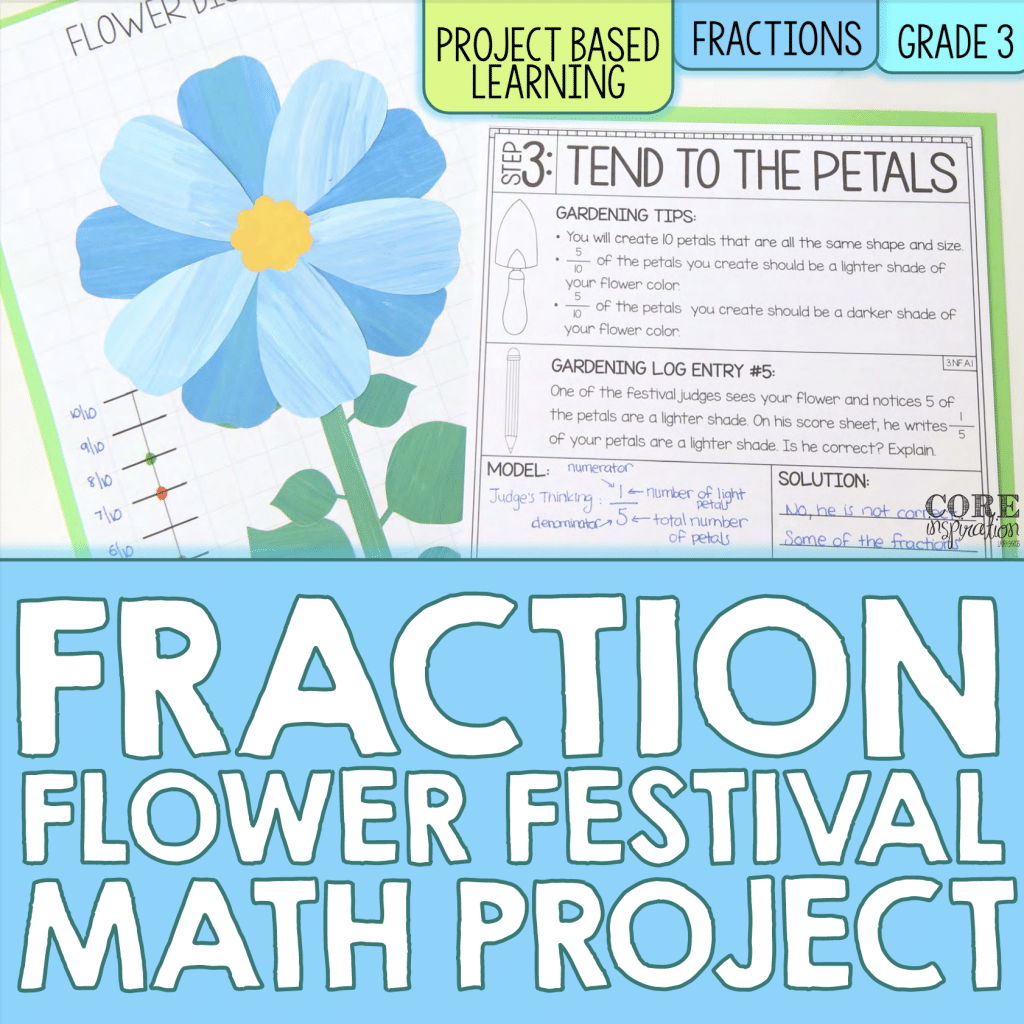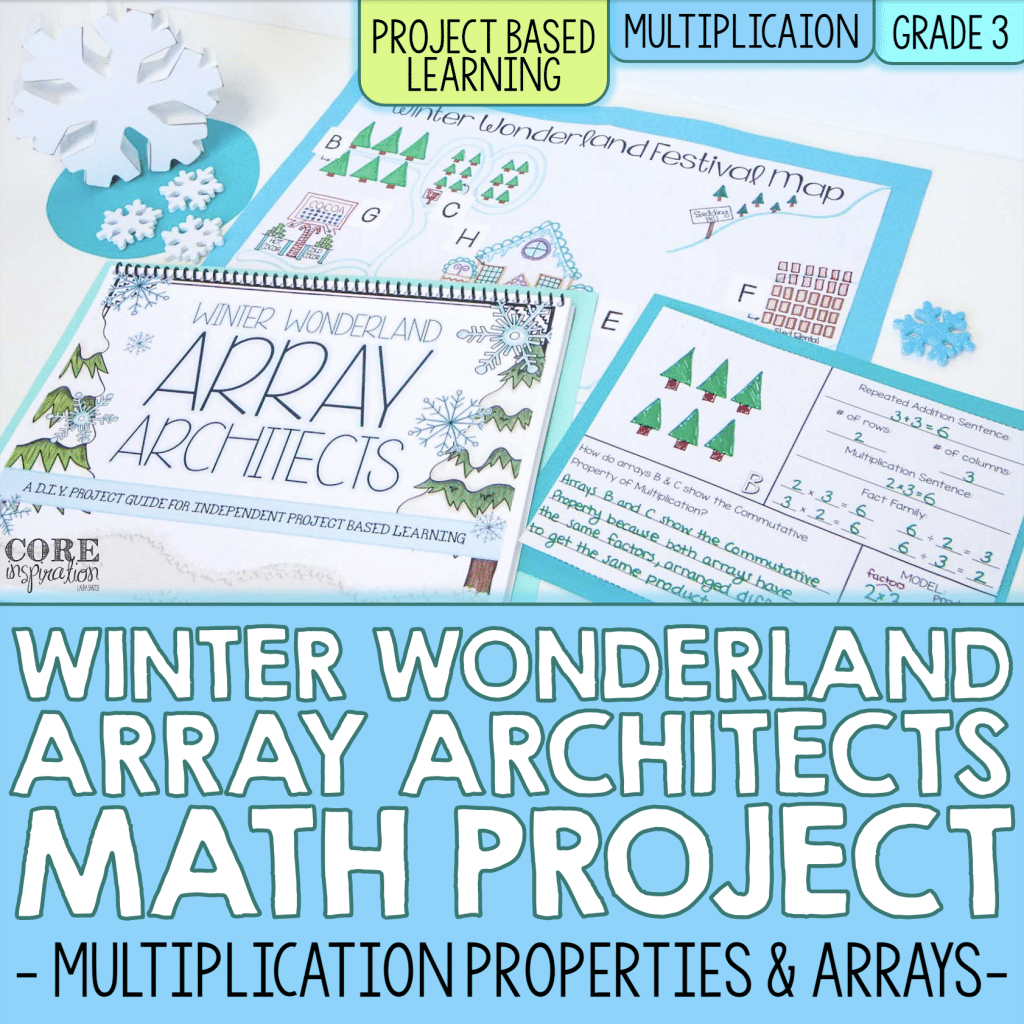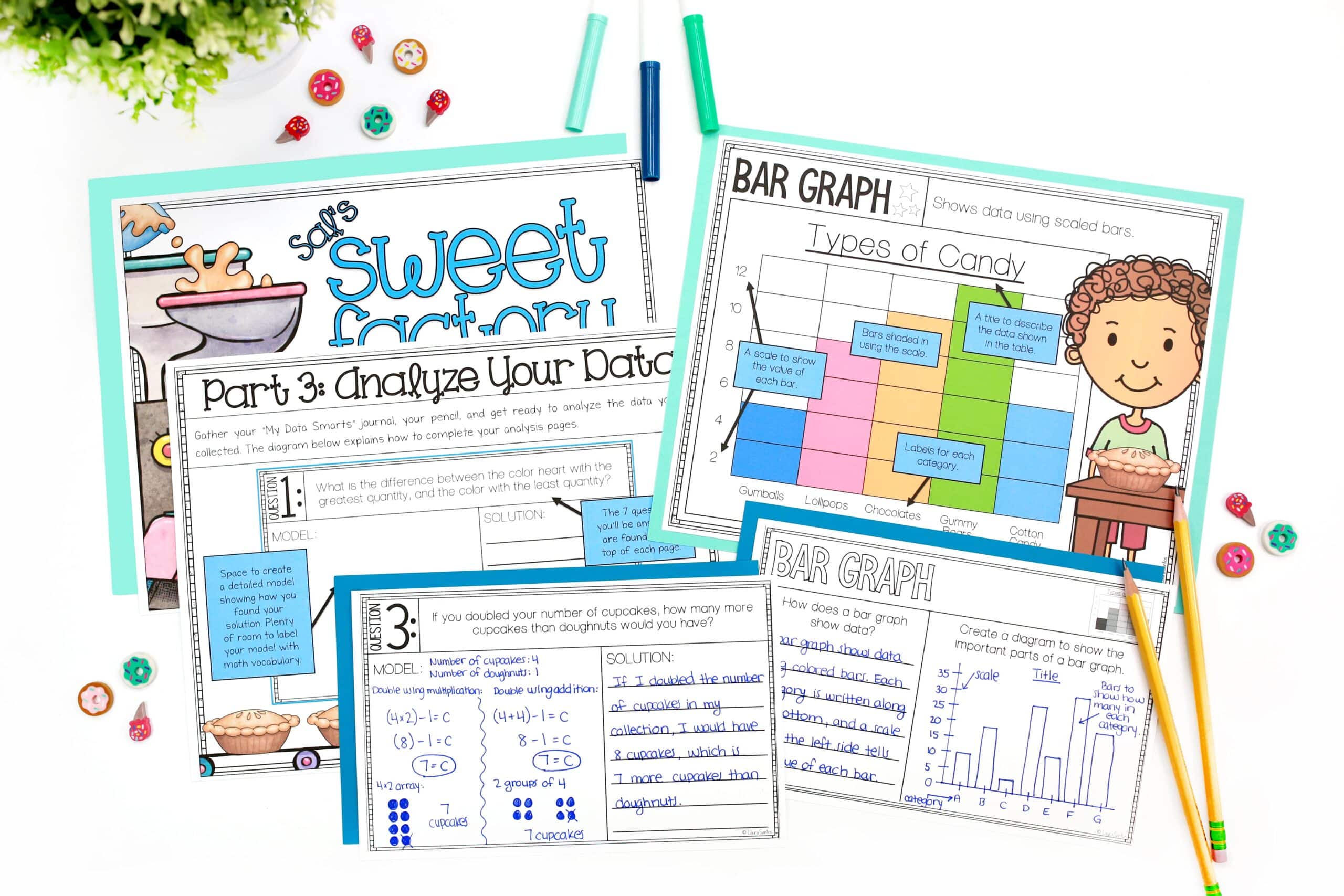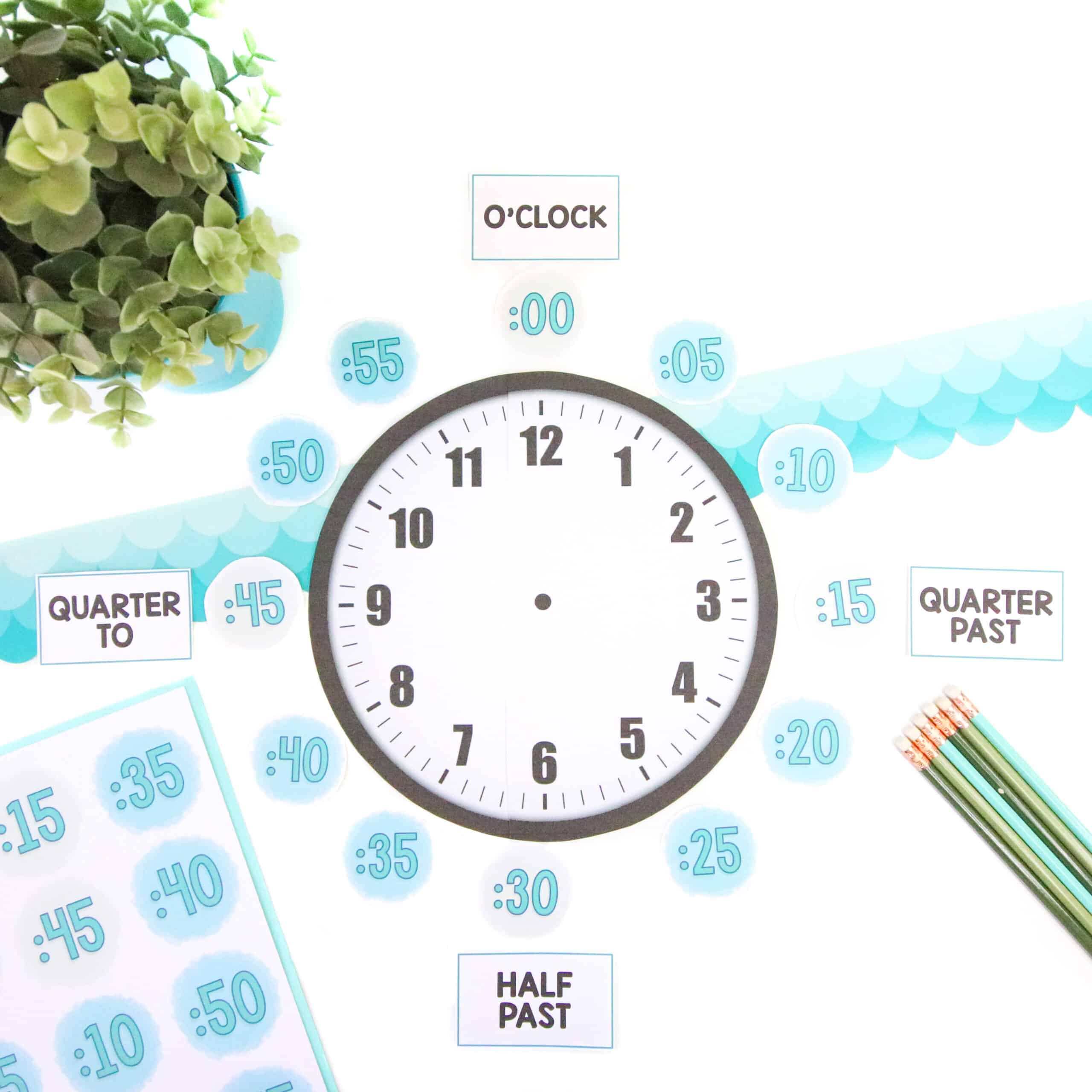A common question I receive is, “How do you find time to teach your full math curriculum, do Math Workshop, and do project based learning?” In my classroom, these three parts of my math instruction are not separate entities, they are all done together during Math Workshop.

Many teachers have the idea that project based learning is something you have to do on top of your regular instruction and Math Workshop routine. In fact, it can be something that enriches your regular instruction and replaces some of the more routine tasks you may be doing during a particular unit.
In this post, I’m going to describe how you can integrate project based learning into your Math Workshop block so students have an opportunity for deeper learning.
Using Project Based Learning In Place of Your Regular Math Workshop Routines
Here are a few perfect opportunities to replace parts of your regular math routine & curriculum with a project:
- When you are coming up on a unit that’s fallen flat in the past
- A unit you feel students will find a bit dry (teaching the attributes of Quadrilaterals for example)
- A unit with concepts the majority of students will pick up on quickly but will need lots of repetition and practice with (like teaching multiplication)

Select a couple units that fall into these categories and are spaced throughout your pacing. These units are the perfect opportunity to use a project instead of worksheets, task cards, and games. Replacing your routine approach to math with a project helps boost student engagement and maintain their focus when a unit falls into one of the categories listed above.
Weaving Project Based Learning Into Your Math Workshop Structure
Once you have a unit selected, shop for a project that fits your needs, or plan one yourself using this process, then plan how it will fit into your Math Workshop block. Here’s the approach that works well in my classroom year after year.
Complete your regular warm up.
Start your math mini lesson. Work through the same lessons you would teach even if you weren’t using an enrichment project. These mini lessons should align with the skills practiced in the project and can absolutely be pulled straight from your curriculum.
Give your students a bit of a head start with mini lessons around the project content before launching the project. For example if you are teaching your unit on fractions, you may teach 3-4 days of fraction mini lessons before launching the project. This way, your students are familiar with the skills they need to carry out the first steps of the project.

On project launch day, replace your content-based mini lesson with a project launch mini lesson when you introduce the project, talk about the rubric, introduce the deadline, and have students set their project goals.
After your mini lesson each day, head into M.A.T.H. rotations just like you usually would during Math Workshop.
Project Work During the At Your Seat Rotation
During the at your seat rotation, students can complete a very short exit-slip style assignment directly from your math curriculum, which aligns with your mini lesson for that day. After checking their work against the answer key, they can dive into their project work for that day. Aim for something that takes less than five minutes so it doesn’t take too much time away from their project work.
Project Work During the Technology Rotation
When using a whole class project, replace the technology rotation with an additional rotation of project work time.

Project Work During the Hands-On Rotation
Give students the option to play hands-on games or continue their project work during the hands-on rotation. For the most part, you’ll find students are so engaged with their project and so excited by the change of pace during workshop that they opt to stay focused on their project work. Other students who benefit from a change in activity have an outlet to switch it up and play games for a bit.
Providing students with a clear deadline and frequent check-ins about where they should be in their progress also helps them make decisions about whether they want to engage in games during the course of workshop each day.
Modifying Meet With The Teacher Rotation When A Project Is In Progress
Rather than meeting with set groups each day when the whole class is working on a project, use the flexibility of calling students who need extra support to work with you each day. You can make a note of any small group who seem to need help with the same part of the project so you can meet quickly to:
- Address student questions
- Model a particular project step
- Reteach a skill that will help that group of students progress to the next project step
Using a tracking sheet like this one allows you to quickly create groups on the fly.

On other days, you may opt to move around the room and meet one-on-one with students to support their unique project needs. This tracking sheet can also help you track who you’ve met with and when you met with them so you can see gaps in the touch points you’ve made.
Give This Approach to PBL A Try In Your Classroom
I hope you feel encouraged now that you’ve seen how project based learning can be something that’s woven into Math Workshop rather than something you need to do in addition to Math Workshop. Give this approach a try this school year and comment below to let know how it goes!
If you are looking for math projects that are already planned for one of your upcoming units, grab one of these teacher favorites today:














2 Responses
Hi Laura,
I really like the ideas and organization presented. What my team of 3rd and 4th grade teachers are struggling with is time. How long of a math block is ideal to have when utilizing MATH rotations and using PBL within that time? Thank you!
Hi Jenny, thank you for reaching out. I’d day the ideal length of time is between 60-75 minutes.